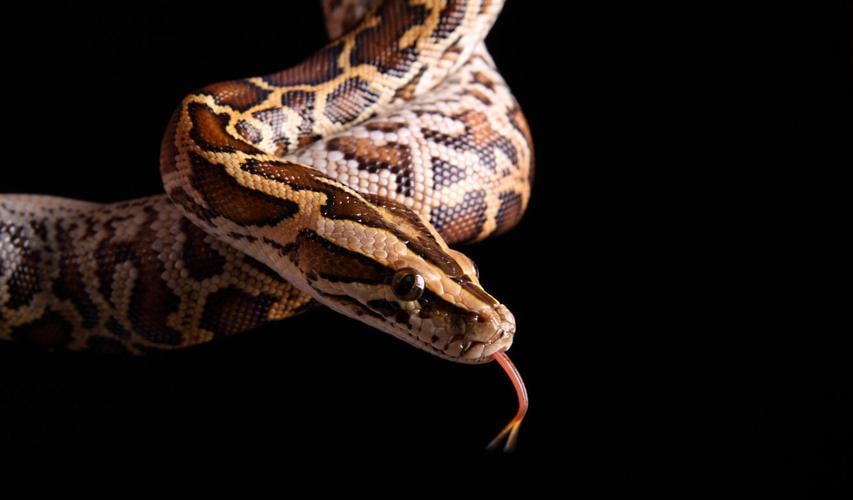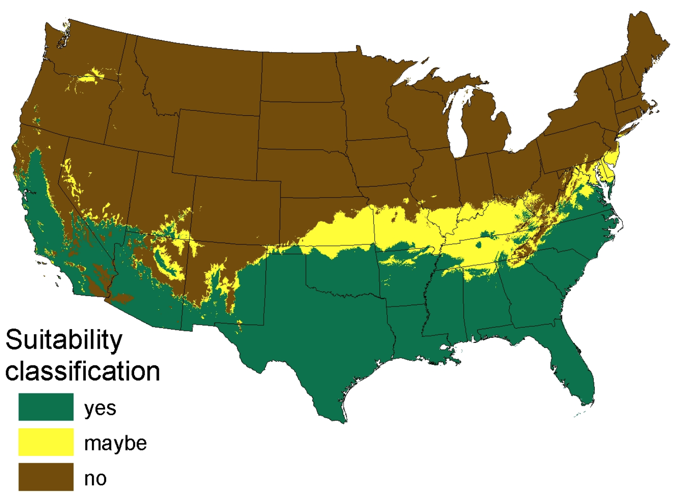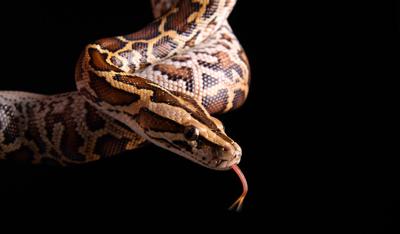States away, non-native Burmese pythons have established a breeding population in Florida and they're spreading fast, with projections putting them in at least 15 American states by the turn of the century. This begs a question – will these invasive 10-to-16-foot-long snakes, known for wreaking havoc among native wildlife, ever make their way to the Centennial State?
With 10,000s of Burmese pythons estimated to be present in the Florida's Everglades area, the Sunshine State is already seeing their impact. Thought to have made their entrance in the 1980s due to getting abandoned by exotic pet owners, a 2012 study showed that local raccoon populations had dropped by 99 percent since 1997, with the opossum population dropping 98.9 percent and the bobcat population dropping by 87.5 percent. Meanwhile, "marsh rabbits, cottontail rabbits, and foxes effectively disappeared," according to the United States Geological Survey, with their report going on to state that "the mammals that have declined most significantly have been regularly found in the stomachs" of the lengthy snakes.
While attacks on humans by pythons are extremely rare, the species is highly effective at killing smaller animals by latching onto an animal with its teeth and then coiling around its prey, suffocating it to death.
There's some good news for Colorado's critters though – while the Centennial State is close to being in the habitable range of the python, conditions aren't quite right.
A map published by the United States Geological Survey captures the expected range of the invasive Burmese python by 2100, taking into account global warming models.
While it shows that pythons could pop-up in states found close to Colorado, including Utah, Oklahoma, Kansas, Arizona, New Mexico, and Texas, only a few extremely small and isolated parts of the Centennial State fall into a category where the area 'might' be suitable for a python habitat.

This map shows the projected range of the invasive Burmese python species by 2100. Map Credit: USGS.
Freezing temperatures are a big part of why Colorado isn't fit for these sizable serpents. After all, pythons have trouble eating and digesting food when temperatures are below 60 degrees, according to an article from NPR. That article also notes that many python range projection maps can be misleading, with the number of freezing days during winter months likely to keep the species out of many areas – at least, for now. Unable to tolerate the cold like native snake species would be able to and unable to hibernate, a herpetologist says it simply wouldn't work.
While the spread of pythons around the southern and southwestern portions of the United States will likely remain a hot topic for years to come, it's unlikely this invasive species will be found in Colorado pending major and unpredicted changes in the climate.
STAY INFORMED: Sign-up for the daily OutThere Colorado newsletter here










(0) comments
Welcome to the discussion.
Log In
Keep it Clean. Please avoid obscene, vulgar, lewd, racist or sexually-oriented language.
PLEASE TURN OFF YOUR CAPS LOCK.
Don't Threaten. Threats of harming another person will not be tolerated.
Be Truthful. Don't knowingly lie about anyone or anything.
Be Nice. No racism, sexism or any sort of -ism that is degrading to another person.
Be Proactive. Use the 'Report' link on each comment to let us know of abusive posts.
Share with Us. We'd love to hear eyewitness accounts, the history behind an article.